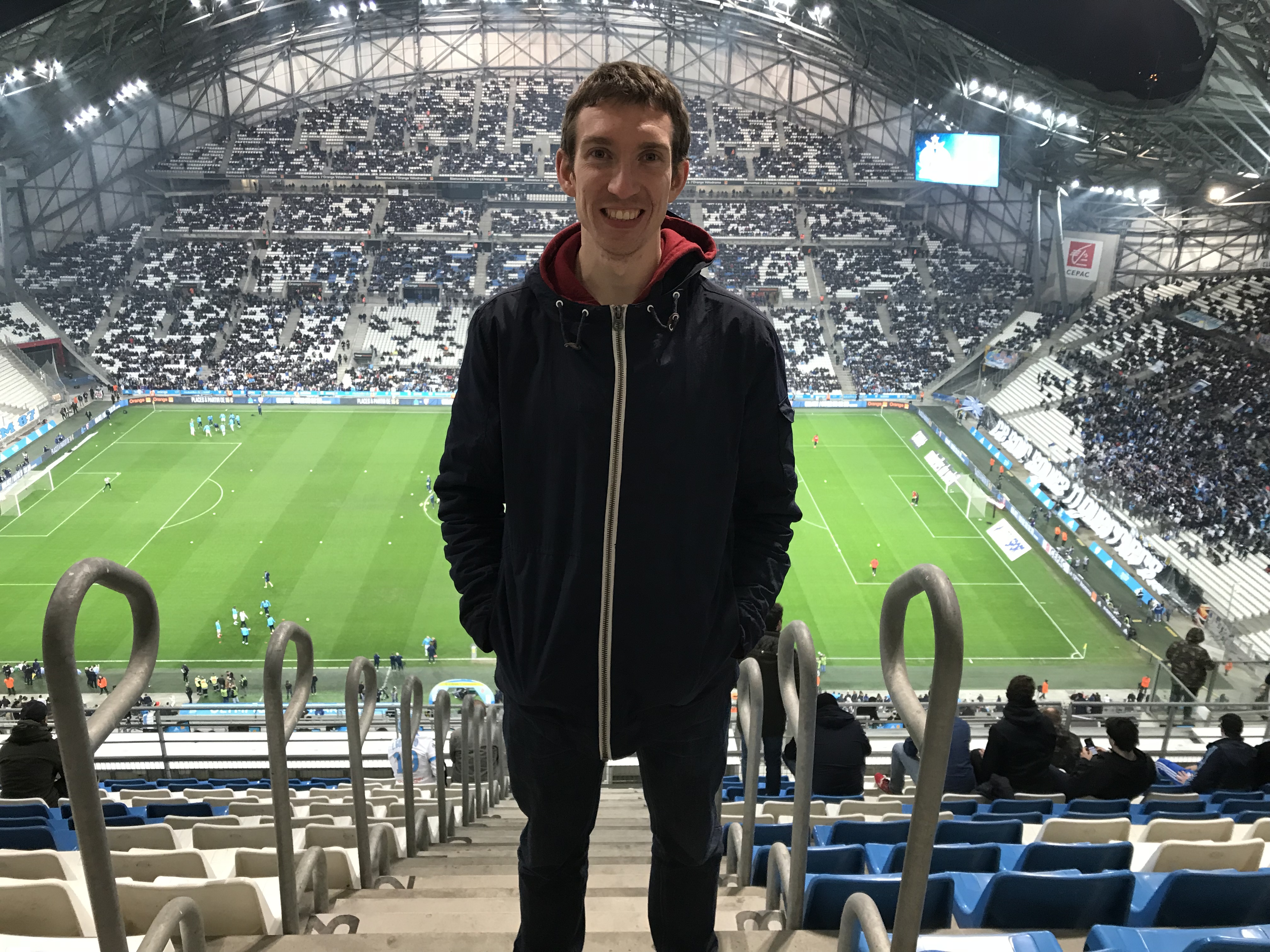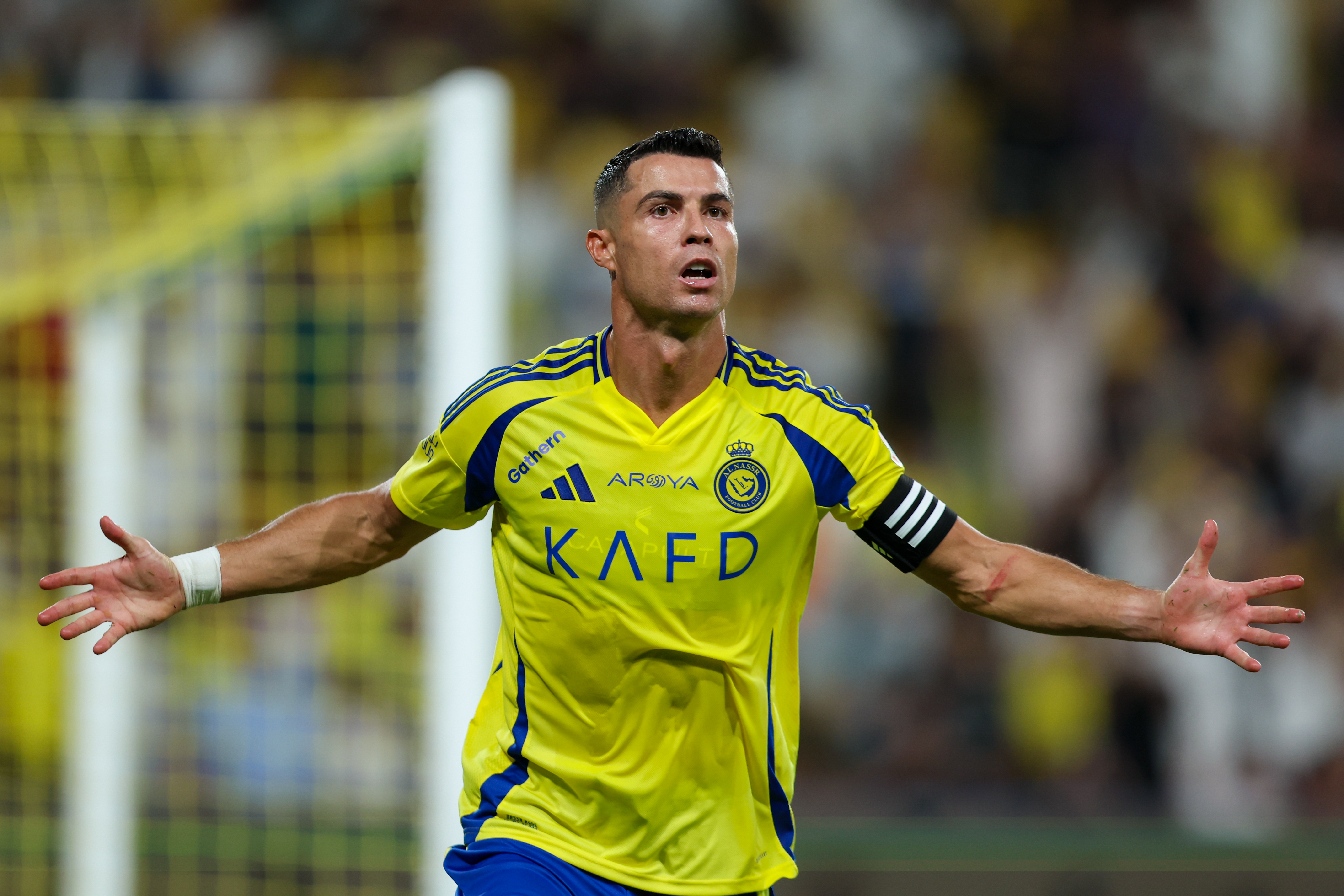Analysed: Why Man United's full-back headache is compounding Van Gaal's misery
Many Manchester United fans have demanded their side play with two flying wingers, but Greg Lea argues that problems on both sides of the defence have been more significant...
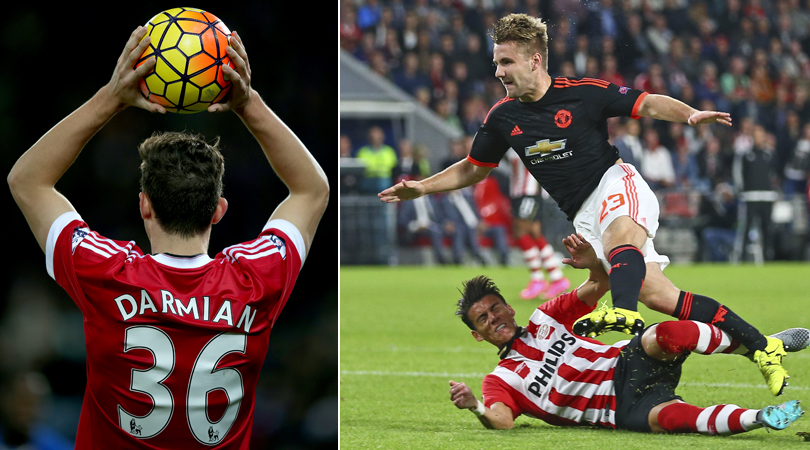
“Manchester United don’t need a philosophy,” Paul Scholes said in November, dismissing manager Louis van Gaal’s obsession with what he terms the ‘process’. “The fans want to see attacking football and goals – that’s the Manchester United way.”
It is an oft-repeated criticism, the largest stick with which Van Gaal has been beaten by fans, the media and ex-players alike. The widespread condemnation of his side’s style of play was present even when United were in touch at the top of the Premier League earlier in the campaign, with the Red Devils’ points tally never the sole yardstick of his performance in the role. The Dutchman has not only been deemed a failure at Old Trafford because of poor results, but also a man whose approach and beliefs are the antithesis of what the club stands for.
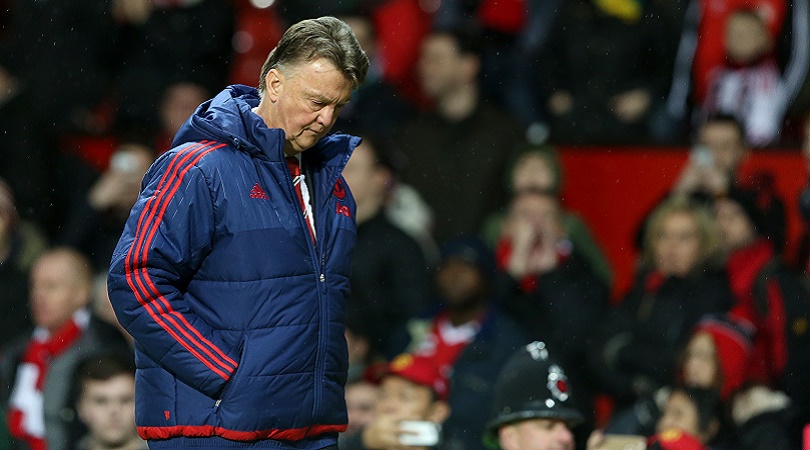
Much of the opprobrium aimed at Van Gaal has been fair: despite spending over £250m on new players in the last 18 months, United have barely progressed since his arrival in the summer of 2014. Having exited this year’s Champions League at the group stage, United – now 10 points adrift of the top four following the nadir that was Saturday’s 1-0 home defeat to Southampton – face an uphill battle to qualify for the 2016/17 edition. The title became an unrealistic objective many weeks ago, while the domestic cup competitions have not yet brought any relief either.
The football, moreover, has been frightfully dull, with a severe lack of energy, dynamism and verve right across the pitch. While defensively solid, United have struggled for goals, with the remarkable statistic that they are ranked first in the Premier League for possession but 17th for chances created evidence of the stodgy and sterile nature of their style.

New thinking
Andrei Kanchelskis’ demands for the “attacking brand of football [and] 4-4-2” seen under Sir Alex Ferguson, for example, failed to recognise that his former boss frequently played with one up front during his later years
Some of the critics, however, have been guilty, to a degree, of disingenuousness and naivety. Andrei Kanchelskis’s demands for the “attacking brand of football [and] 4-4-2” seen under Sir Alex Ferguson, for example, failed to recognise that his former boss frequently played with one up front during his later years, with Park Ji-sung and Wayne Rooney – a hard-working midfielder and a hard-working centre-forward – often used out wide in the biggest games, particularly in the Champions League.
A starting formation that encompasses two out-and-out widemen and two strikers is extremely difficult to find in the modern game; most top clubs’ primary aim is to control the centre of the pitch by employing three central midfielders – usually in either a 4-3-3 or 4-2-3-1 configuration – and inverted wingers, with full-backs more often than not the providers of attacking width.
Get FourFourTwo Newsletter
The best features, fun and footballing quizzes, straight to your inbox every week.
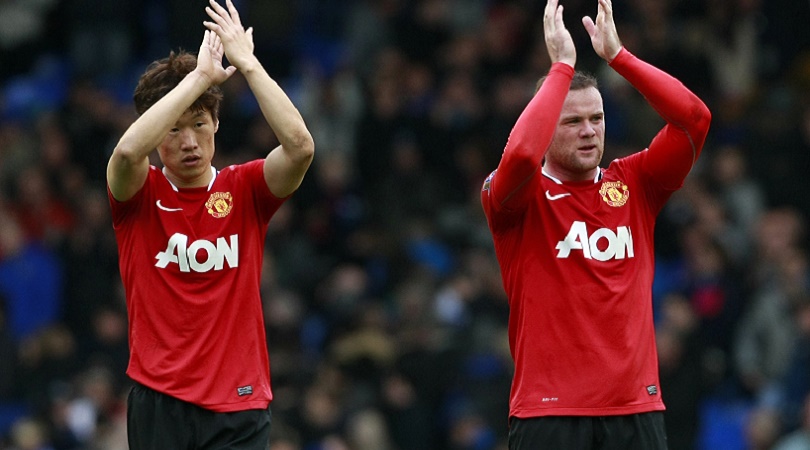
It’s in this regard that it’s possible to feel a little sympathy for Van Gaal. Going into this season, Matteo Darmian and Luke Shaw were set to be his first-choice full-backs on the right and left side of the defence respectively, with Antonio Valencia and Marcos Rojo the primary back-up options and Paddy McNair, Phil Jones, Ashley Young, Daley Blind, Guillermo Varela and Cameron Borthwick-Jackson all capable of providing cover in an emergency.
Attacking outlets in defence
Darmian could regularly be found flying down the flank when deployed as a wing-back in former club Torino’s 3-5-2 setup, with his willingness to get forward on the overlap also in evidence during Italy’s 2-1 victory over England in the group stage of the 2014 World Cup in Brazil.
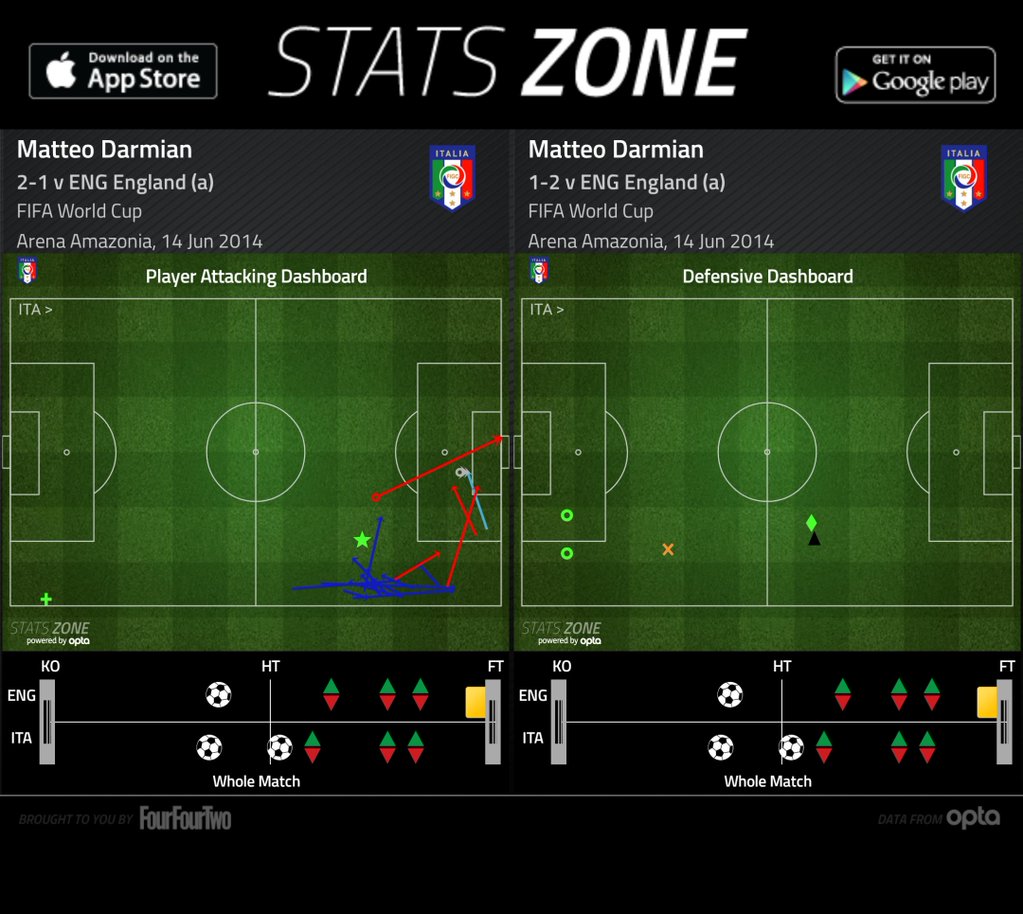
After a difficult first year at Old Trafford last time out, Shaw also demonstrated his attacking qualities in the opening weeks of the current campaign. Young – deployed on the left of an attacking line of three in Van Gaal’s customary 4-2-3-1 – to Shaw was United’s most common passing combination on the opening day against Tottenham, while Bastian Schweinsteiger to Shaw was their second-most common against Swansea in late August.
The left-back was frequently United’s principal source of pace, dynamism and width early on in the season, with his performance in that 2-1 defeat at Swansea particularly notable for the influence he had on the team going forward, even if United ultimately came unstuck against Garry Monk’s charges at the Liberty Stadium.
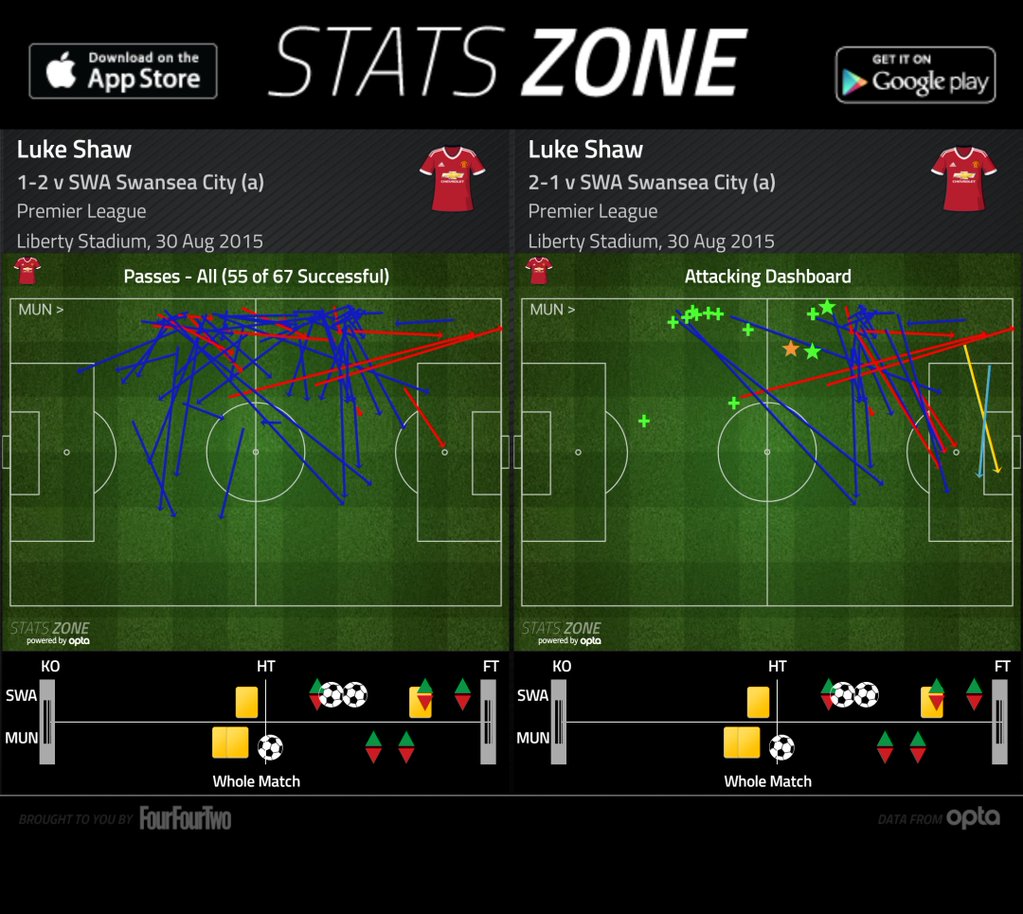
The broken leg Shaw suffered in the Champions League tie with PSV Eindhoven in September ruled him out of action for up to nine months, however, while Darmian has been in and out of the team with various injury issues of his own.
Even when available, the Italian has been far from his best in the last couple of months, defensive shakiness and an uncharacteristic lack of attacking ambition combining to produce some below-par displays. McNair, Borthwick-Jackson, Jones, Blind and Varela have all deputised at full-back but struggled to provide the same spark going forward, with an injury to alternative option Young earlier in January adding to Van Gaal’s defensive woes.
High and wide
The below graphic from the 0-0 draw with Newcastle at Old Trafford in August shows the typical shape of United’s side with Darmian and Shaw in it. The pair regularly took up advanced positions as they looked to support the attack, with both men generally staying close to the touchline to stretch the play laterally and offer a passing option out wide as their opponents looked to shut off space in the centre. Darmian and Shaw only started four Premier League games together after that, and United’s play suffered as a result.
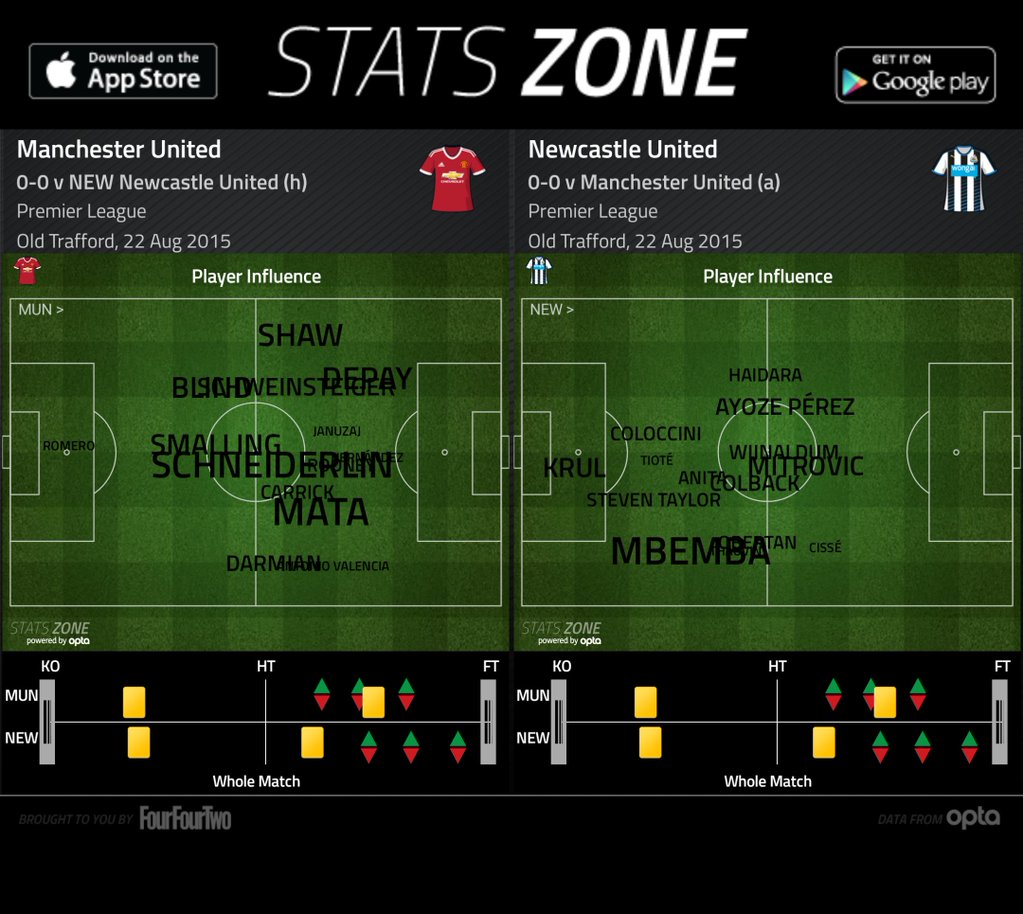
It’s unlikely that the duo’s permanent availability would have drastically altered Van Gaal’s tactics or United’s level of performance. The Dutchman’s biggest critics may even argue that he would have eventually coached such forward-thinking instincts out of them anyway.
Perhaps, though, the presence of a fit Shaw and in-form Darmian – full-backs fulfilling the traditional functions of wingers – would have satisfied United fans’ hankering for speed and width and provided something of an antidote to the excessively dull, dreary and risk-averse football routinely produced ahead of them.
RECOMMENDED
- 13 Premier League players who should move to keep their Euro 2016 hopes alive
- Manchester United to punish Van Gaal with new contract
- Van Gaal at Bayern: When Louis averted a crisis – then talked himself into a bitter exit
Greg Lea is a freelance football journalist who's filled in wherever FourFourTwo needs him since 2014. He became a Crystal Palace fan after watching a 1-0 loss to Port Vale in 1998, and once got on the scoresheet in a primary school game against Wilfried Zaha's Whitehorse Manor (an own goal in an 8-0 defeat).
